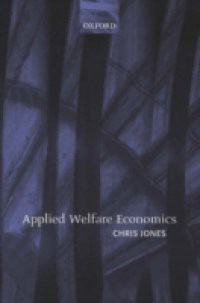Applied Welfare Economics uses important results in the welfare economics literature to extend a conventional Harberger cost-benefit analysis. After reviewing the properties of different welfare measures a conventional welfare equation is used to evaluate marginal policy changes in a general equilibrium economy with tax distortions. The analysis is extended to accommodate trade and income taxes, time, internationally traded goods, and non-taxdistortions, including externalities, non-competitive behaviour, public goods and price quantity controls. The welfare analysis is developed in stages, and where possible is explained using diagrams, to make it more adaptable to the different institutional arrangements encountered in applied work. With this in mind,computable welfare expressions are solved using demand and supply elasticities for each good. The lump-sum transfers used in a conventional analysis to separate welfare effects are carefully examined to identify the role of the marginal social cost of public funds (MCF) in policy evaluation. The main contribution in the book is to separate income effects for marginal policy changes in the shadow value of government revenue,which converts efficiency effects into dollar changes in private surplus. It is a scaling coefficient that makes income effects irrelevant in single (aggregated) consumer economies, and conveniently isolates distributional effects in heterogeneous consumer economies. The decomposition is used to test for Pareto improvements, and to examine the separate but related roles of the shadow value of government revenue and the MCF in applied work.

